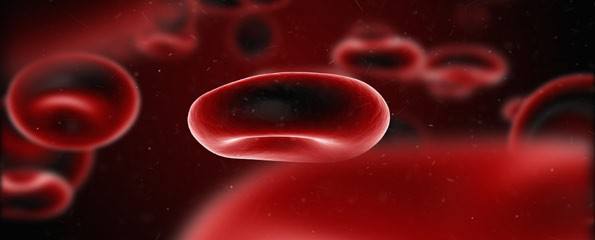Blood Clotting: Assessment Before Surgery
 Why is good blood clotting important to achieve?
Why is good blood clotting important to achieve?- Types of blood clotting disorders
- Clinical assessment of blood clotting
- Bleeding history
- Medications that affect blood clotting
- Family history and inherited causes of excessive bleeding
- Laboratory testing
- Conclusion
Why is good blood clotting important to achieve?
 Adequate blood clotting is very important if you are about to have a surgical procedure. Modern surgical techniques have resulted in an overall decrease in significant bleeding, but there has been an increase in blood clotting abnormalities that develop after exposure to an agent or compound. Most acquired abnormalities are caused by the widespread use of agents that act against platelets and blood clotting factors, as well as an increase in the average age of people undergoing surgery.
Adequate blood clotting is very important if you are about to have a surgical procedure. Modern surgical techniques have resulted in an overall decrease in significant bleeding, but there has been an increase in blood clotting abnormalities that develop after exposure to an agent or compound. Most acquired abnormalities are caused by the widespread use of agents that act against platelets and blood clotting factors, as well as an increase in the average age of people undergoing surgery.
The increasing complexity of surgical and other invasive procedures has also presented challenges for the prevention of bleeding. Surgery concerning the heart, liver and nervous system result in significant changes to mechanisms which control bleeding and blood clotting. These require specific management.
Types of blood clotting disorders
Inherited bleeding disorders are less common than acquired disorders, but are just as important to detect before an operation. These disorders may affect the function of platelets and blood vessel walls (a process known as primary haemostasis) or the clotting system. The most common of these is von Willebrand’s disease, which affects around one per cent of the population.
Your doctor can perform a clinical assessment and request appropriate laboratory tests to rule out the presence of these diseases. By being aware of the underlying mechanisms of these bleeding disorders, the majority of these conditions can be detected before any invasive procedure.
Clinical assessment of blood clotting
A thorough clinical assessment, which involves taking your history and giving you a clinical examination, can provide your doctor with information important for detecting bleeding disorders. Ideally, doctors and nurses who are experienced in the detection of bleeding disorders should perform your assessment or be involved in part of your overall assessment.
Bleeding history
 A history of bleeding is vital in determining the underlying cause of a bleeding disorder. A defect affecting the function of platelets and blood vessel walls is likely to cause bleeding into the skin and mucous membranes. On the other hand, a defect of the clotting system often leads to more substantial bleeding into joints and muscles, resulting in deeper, localised collections of blood.
A history of bleeding is vital in determining the underlying cause of a bleeding disorder. A defect affecting the function of platelets and blood vessel walls is likely to cause bleeding into the skin and mucous membranes. On the other hand, a defect of the clotting system often leads to more substantial bleeding into joints and muscles, resulting in deeper, localised collections of blood.
Recurrent nose bleeds are a common symptom of a defect affecting platelets and blood vessel walls. This is a particularly common symptom of von Willebrand’s disease. It should be remembered that the majority of nose bleeds in children is due to trauma, whereas abnormalities of the blood vessels are very common in the elderly. Nevertheless, if you have a long history of unexplained nose bleeds extending from childhood, you may have a bleeding disorder and should investigate further.
Bleeding after an operation or procedure
Bleeding following dental extraction of a tooth can be a feature of a defect of either the platelets and blood vessels, or of the clotting system. If bleeding has ever caused you to need an operation to stop the bleed, or if it extends over a number of days, a bleeding disorder may be present. Spontaneous bleeding from the gums for no apparent reason is frequent with disorders of the platelets and blood vessels.
A history of post-operative bleeding may also indicate a bleeding disorder, although most bleeding episodes are due to the procedure itself. The absence of a bleeding history is also important, as this indicates that you have had normal blood clotting in the past. This makes an inherited defect of clotting less likely. Some procedures, such as tonsillectomy (removal of the tonsils), carry a high risk of bleeding if you have any blood clotting defects. A history of problems with wound healing can be associated with connective tissue disorders and factor XIII deficiency (a factor involved in blood clotting).
Collections of blood in the joints (haemarthrosis) and muscles (haematomas) are most frequently seen if you have some defect of blood clotting factors. The most common conditions associated with clotting defects are haemophilia A and haemophilia B.
Keeping a good history of their menstrual cycle (or ‘periods‘) is important for women. Seventeen per cent of women with abnormal, heavy bleeding and a normal examination will have an inherited bleeding disorder. This is most frequently von Willebrand’s disease. These women are more likely to have had heavy periods since they started menstruating, had post-operative bleeds, and bleeds after pregnancy. A negative family history does not always exclude a diagnosis.
Medications affecting blood clotting
 Aspirin is a highly effective agent that works to stop platelets from functioning. Aspirin has been proven to be beneficial in secondary prevention of heart attacks and diseases of blood vessels to the brain. It is also important in the primary prevention of diseases of the heart and major blood vessels in people with risk factors such as:
Aspirin is a highly effective agent that works to stop platelets from functioning. Aspirin has been proven to be beneficial in secondary prevention of heart attacks and diseases of blood vessels to the brain. It is also important in the primary prevention of diseases of the heart and major blood vessels in people with risk factors such as:
- Smoking;
- Unhealthy diets;
- A family history of heart disease;
- High blood pressure; and
- High cholesterol levels.
The use of aspirin in the community is widespread, with at least one study finding that 9 per cent of healthy people averaging 60 years of age take the drug. There is evidence, particularly in relation to heart surgery, that aspirin increases blood loss after the operation, and also the likelihood of repeat operations. The risks of aspirin need to be weighed against the benefits, especially for people with unstable heart disease. This has lead to the use of agents such as aprotinin and tranexamic acid to counteract the effects of aspirin.
The effects of aspirin on platelets remains for the lifespan of the platelet, which is 8–10 days. Therefore, to prevent any contraindications, aspirin therapy must be stopped at least 10 days before a planned operation. This should be discussed with your doctor beforehand.
Clopidogrel and ticlopidine block the activation of platelets by acting on a compound called adenosine diphosphate (ADP). Ticlopidine is beneficial in the secondary prevention of events affecting the heart and brain’s blood vessels, but its clinical usefulness is restricted by its side effects. Clopidogrel, on the other hand, has a better side effect profile, and is useful in the reduction of events occurring in blood vessels and of death in people with established arterial disease.
For people with unstable angina (chest pain that occurs in response to a lower level of exercise or other stimuli than is usually required to produce pain), the combination of clopidogrel and aspirin is more effective than aspirin alone for preventing death due to heart disease or stroke. This combination does, however, carry a higher risk of bleeding (3.7% versus 2.7% for aspirin-only therapy). For people who require coronary artery bypass surgery, there is no increased risk of bleeding if the medication is ceased at least five days before the operation; there is a significantly higher risk of bleeding (9.6% vs 6.3%) if the medication is still taken before the operation.
Non-steroidal anti-inflammatory drugs (NSAIDs)
 NSAIDs are a group of anti-inflammatory agents that work by inhibiting the production of prostaglandins (hormone-like substances that mediate many bodily functions, such as blood pressure, inflammation and smooth muscle contraction). NSAIDs have anti-inflammatory, analgesic and antipyretic actions, and also prolong bleeding time. The duration of this effect is dependent on the specific drug; long-acting preparations such as piroxicam (half life 36–45 hours) have a longer effect than others such as indomethacin (half life 4 hours). NSAIDs should be stopped before an operation, in accordance to the half life.
NSAIDs are a group of anti-inflammatory agents that work by inhibiting the production of prostaglandins (hormone-like substances that mediate many bodily functions, such as blood pressure, inflammation and smooth muscle contraction). NSAIDs have anti-inflammatory, analgesic and antipyretic actions, and also prolong bleeding time. The duration of this effect is dependent on the specific drug; long-acting preparations such as piroxicam (half life 36–45 hours) have a longer effect than others such as indomethacin (half life 4 hours). NSAIDs should be stopped before an operation, in accordance to the half life.
There are a number of other drugs that have effects against platelets, such as:
- Antibiotics;
- Beta blockers (used to control heart rate or force);
- Selective serotonin reuptake inhibitors (used for depression); and
- Antihistamines.
Although these drugs may prolong bleeding time and result in abnormal platelet aggregation, the consequences of taking these drugs in the period just before an operation are not clear.
Important herbal preparations that can interfere with blood clotting include garlic, ginko and ginseng. All of these agents affect platelet function. Garlic has been shown to increase the effects of medications acting on platelets, and ginseng has been proven to prolong blood clotting time. Therefore, garlic and ginseng should be stopped at least 7 days before an operation, while ginko should be stoped 36 hours before.
People may be given oral medications that act to prevent blood clotting if they have a condition that puts them at an increased risk for clotting, such as:
- Venous thromboembolic disease (blood clots forming in the veins in the legs or lungs);
- Mechanical valves; and
- Atrial fibrillation (irregular heart rhythm).
An increased likelihood of developing clots is one important risk factor for ischaemic stroke that can be modified.
Before your operation, your doctor will have to weigh up the risk of blood clots developing against the risk of significant bleeding. Certain surgical procedures, such as those in the mouth, often do not require adjustment to your usual medications. If you have experienced a recent blood clot or are at particular risk, you should probably receive alternative anticoagulation medication before and after the operation. Your doctor will review the situation to decide upon the best course of action.
With other conditions such as an irregular heart rhythm, it is estimated that the daily risk of stroke is only 0.5% per day, making it safe to stop oral anticoagulant medication three days before the operation. Warfarin can be re-introduced after the operation at your usual dose. In the meantime, another anticoagulant such as heparin, which works on different enzymes in the clotting cascade, can be used until full reversal of blood clotting is achieved with warfarin.
In an emergency situation, the increased blood clotting risk may be reversed by administering fresh frozen plasma or vitamin K into the veins.
Family history and inherited causes of excessive bleeding
 If you have a suspected bleeding disorder, part of the evaluation before your operation is to obtain an accurate family history. Many disorders are inherited in an autosomal dominant, autosomal recessive or X-linked manner, and this information can be valuable for stopping you from taking unnecessary tests. Autosomal dominant means that an abnormal gene from one parent is capable of causing disease, even though the matching gene from the other parent is normal. Autosomal recessive means that both genes of a pair, from both parents, must be abnormal to produce disease. X-linked refers to abnormal genes on the chromosomes.
If you have a suspected bleeding disorder, part of the evaluation before your operation is to obtain an accurate family history. Many disorders are inherited in an autosomal dominant, autosomal recessive or X-linked manner, and this information can be valuable for stopping you from taking unnecessary tests. Autosomal dominant means that an abnormal gene from one parent is capable of causing disease, even though the matching gene from the other parent is normal. Autosomal recessive means that both genes of a pair, from both parents, must be abnormal to produce disease. X-linked refers to abnormal genes on the chromosomes.
Remember that some inherited conditions can arise without any family history. One notable example is haemophilia A, in which a third of people with the condition have no family history of it. In the majority of these cases, the mutation occurs in the maternal grandfather at the time of cell division.
von Willebrand’s disease, haemophilia A and haemophilia B are the three most commonly encountered inherited disorders of blood clotting. The frequency of these disorders is 1 in 100, 1 in 5,000 and 1 in 30,000 respectively. Other inherited disorders of blood clotting are rare.
von Willebrand’s disease is found in 1% of the population. The diagnosis is made on the basis of the clinical history and laboratory tests.
Despite the comparatively high prevalence of this condition, studies have not shown any value in screening before an operation. A study of patients undergoing surgery found that, while the prevalence of von Willebrand’s disease was 0.6%, most could be predicted from clinical evaluation; and the ones that were not had no difference in severe bleeding risk.
Haemophilia A and B are X-linked disorders that lead to decreased factor VIII and IX levels respectively. If you suffer from haemophilia, you can safely undergo surgical procedures, including joint replacements, with correct care and preparation before the operation. Your management before and after is best carried out in a centre familiar with the management of patients with bleeding disorders.
Liver disease
If you have had liver disease, you may have difficulty producing proteins involved in blood clotting. This may be due to the liver failure itself, or to a decreased absorption of vitamin K, which is needed for the production of many clotting factors. This leads to reduced clotting levels and abnormal clotting function. Decreased functioning and platelet problems are also a feature of liver disease, particularly when caused by excessive alcohol consumption. The predominant factor deficiency in liver disease is that of factor VII, which is essential in the blood clotting process.
People with liver disease who are considering liver biopsy need to take note of:
- Prothrombin times more than 3–5 seconds longer than the control value;
- Platelet counts less than 50 x 109/L; and
- Bleeding times greater than 10 minutes.
These problems may need to be managed before the operation by correcting any vitamin K deficiency, replacing factors with fresh frozen plasma or prothrombin complex concentrates, and correcting low platelet levels.
Kidney disease
Bleeding in kidney disease is primarily caused by a defect of the function of platelets and blood vessel walls due to a build up of waste products in the blood which are normally excreted in urine. This is known as uraemia. As a consequence of uremia, platelets become dysfunctional and their interaction with other substances is impaired. Platelets may also become activated during dialysis. This is a procedure that removes waste products from the blood, and may be needed if you suffer from severe kidney failure. Kidney dysfunction can also lead to anaemia (decreased red blood cell levels and oxygen carrying capacity of blood).
Before an operation, people with kidney disease will be assessed on the degree of uraemia and anaemia, and any history that may suggest an inherited or acquired bleeding tendency. Ideally, both of these should be corrected before the operation.
Laboratory testing
 The results of studies clearly demonstrate that the majority of preoperative tests are unnecessary. Less than 3% of people will have an unexpected blood result, and less than 0.6% will need to alter their operative management.
The results of studies clearly demonstrate that the majority of preoperative tests are unnecessary. Less than 3% of people will have an unexpected blood result, and less than 0.6% will need to alter their operative management.
The data concerning screening for specific blood clotting factors is controversial. Studies of screening tests performed to evaluate blood clotting factors have failed to establish any benefit over adequate clinical assessment.
In one of the largest studies for testing blood clotting factors before an operation, more than 3,200 patients had their prothrombin time, activated partial thromboplastin time, platelet count and bleeding time measured. A clinical assessment of bleeding risk was also performed. Based on the clinical and laboratory findings, patients were subsequently divided into four groups: those without clinical or laboratory abnormalities, those with laboratory abnormalities only, those with clinical abnormalities only, and those with both clinical and laboratory abnormalities. Only the latter group (those with abnormalities seen clinically and on test results) received specific corrective therapy. The prevalence of post-operative collections of blood in the tissues, blood loss, re-operation or mortality related to bleeding was the same for all groups. The organisers concluded that, in the absence of a clinically evident risk of bleeding, the use of pre-operative testing is unnecessary. Similar results have been found in other surgical settings, including neurosurgery, obstetric surgery and plastic surgery.
Children and special situations
One area that merits special attention is that of children undergoing ear, nose and throat surgery. While acquired bleeding disorders are more common over all ages, congenital bleeding disorders are more likely to be encountered for the first time in children. As a result, up to 45% of children having elective surgery will undergo testing for blood clotting abnormalities before their operations.
Studies in this area have produced conflicting results. In children undergoing tonsillectomy (removal of the tonsils) and adenoidectomy (removal of the adenoids, which are masses of tissue at the back of the nose in the upper part of the throat), there has been controversy. Two earlier studies suggested a role for screening before the operation. A more recent study produced conflicting results, concluding that in the absence of clinical evidence of a bleeding disorder, testing is unnecessary.
Some more specific, directed investigations include:
- Bleeding time (the amount of time it takes for the blood to clot);
- Prothrombin time or partial thromboplastin time; and
- Platelet count.
A full blood count measures the amounts of all types of cells in the blood, including red cells, white cells, and platelets. A number of detectable abnormalities in either cell function or level may result in a increased risk of bleeding.
Activated partial thromboplastin time (APTT)
The activated partial thromboplastin time (APTT) is a measure of the time taken (in seconds) for clots to form in a blood sample after the addition of calcium and an activator such as kaolin or phospholipid. The normal range is usually 25–35 seconds.
The APTT may be tested if you have a suspected bleeding disorder, or before you start anticoagulation therapy with heparin or warfarin. The test is not useful before surgery without a history of bleeding, and is not used for monitoring certain types of heparin, such as clexane.
The APTT is sensitive to deficiencies of factors VIII, IX, XI and XII, and to the lupus anticoagulant. If you have had a previous blood clot, a prolonged APTT may indicate the presence of the lupus anticoagulant. This is paradoxically associated with an increased propensity to clot. Hence, the finding of a prolonged APTT is not a predictor of bleeding tendency. It is also noteworthy that some factor deficiencies, such as factor XII deficiency, are not associated with a tendency to bleed.
The APTT may also be prolonged in von Willebrand’s disease as the result of reduced factor VIII levels due to the loss of the protective effect of von Willebrand factor. Most people with von Willebrand’s disease, however, will not have a prolonged APTT.
 The prothrombin time (PT) is a measure of the time taken (in seconds) for clots to form in a blood sample after the addition of products such as thromboplastin and calcium. The normal range is usually 12–15 seconds.
The prothrombin time (PT) is a measure of the time taken (in seconds) for clots to form in a blood sample after the addition of products such as thromboplastin and calcium. The normal range is usually 12–15 seconds.
The PT is sensitive to deficiencies of blood clotting factors II, V, VII, IX and X. If one or more of these factors are deficient, the PT is prolonged. The PT will also be prolonged if there is a severe deficiency of fibrin (the end product of the clotting cascade, which helps form the plug to stop the bleeding process). The PT is also prolonged in liver disease and vitamin K deficiency. The sample must be correctly taken and processed before the results can be interpreted. If there is any question about the quality of the sample, another sample may be requested.
If you are on oral blood thinning agents, your blood’s consistency and likelihood of clotting is usually monitored by using the prothrombin time to calculate an international normalised ratio (INR). The INR is calibrated across all laboratories to ensure that they are standardised, regardless of where your blood is tested. This is important for people who require ongoing monitoring while on oral blood thinning therapy.
The thrombin time (TT or TCT) is a measure of time taken (in seconds) for clots to form in a blood sample after the addition of thrombin to plasma. It assesses the formation of the end product of the clotting cascade, fibrin, from its precursor fibrinogen.
Causes of a prolonged TT include severe liver disease and disseminated intravascular coagulation (DIC), a disorder that occurs following the uncontrolled, abnormal activation of clotting factors and enzymes in small blood vessels, resulting in tissue death and bleeding.
Platelet count and assessment of platelet function
The platelet count is usually conducted on an automatic analyser machine. The platelet count can be misleadingly lowered if the sample has clotted before analysis, or by platelet aggregation caused by EDTA. Microscopy is therefore carried out in cases of unexpected low platelet counts. Microscopy can also be useful in distinguishing some inherited platelet disorders, such as Bernard Soulier syndrome. This condition is characterised by abnormally large platelets and low platelet counts.
The bleeding time test involves making a small incision on the forearm, approximately 1 mm deep and 10 mm long. The test can take up to 20 minutes. Some people may find the test a bit uncomfortable, and there is a small risk of slight scarring.
Although the test is sensitive to the effects of aspirin, von Willebrand’s disease and some platelet disorders, a prolonged bleeding time does predict bleeding risk. This has been proven in a number of surgical settings under different conditions, including the use of aspirin and NSAIDs. Current guidelines advise against using bleeding time tests in most circumstances.
Factor assays and other special tests
Tests for specific factors may be performed where there is the suspicion of a factor deficiency based on history, examination and subsequent testing. Some factor deficiencies such as factor XIII deficiency are exceedingly uncommon (200 cases reported worldwide) and are usually evident from the clinical history (factor XIII deficiency is associated with severe bleeding from birth). Testing for these rare deficiencies has a low yield, and can be time consuming and expensive.
These tests assess the aggregation of platelets when you are given certain compounds, including ADP, arachidonic acid, collagen, adrenaline and ristocetin. If you have a strong history of bleeding and the more routine tests are normal, your doctor may consider using platelet aggregation tests.
The platelet function analyser is a relatively recent testing device that may be used to screen for platelet function abnormalities. The device consists of a membrane with a small hole through which blood is passed. The membrane is coated with a substance that promotes aggregation (such as ADP or adrenaline). A prolonged time taken for the platelets to clot is correlated with platelet dysfunction. The test is particularly useful for detecting platelet abnormalities caused by aspirin or von Willebrand’s disease. In these conditions, it has been found to be superior to the bleeding time.
Less common tests of platelet function
Flow cytometry and electron microscopy may be used in the rare case where no abnormality can be characterised by other tests. These are specialised tests and are often only performed in reference laboratories.
Conclusion
Before you undergo invasive procedures and operations, if you suffer from blood clotting disorders, you should undergo an assessment that covers important information, such as clinical features including personal or family history of bleeding, medical conditions present and medications taken. Your doctor may also decide to do some blood tests. Different procedures are associated with different changes in the blood clotting system.
Article kindly contributed by:
Andrew D McQuillan
MB BS FRACP FRCPA
Clinical Haematologist, Department of Haematology, Fremantle Hospital, Western Australia; St John of God Hospital, Western Australia; Western Diagnostic Pathology, Western Australia; and Editorial Edvisory Board Member of the Virtual Blood Centre
References
- Prasad V, Smith A. Preoperative assessment: From tribalism to cooperation. Lancet. 2001;358(9295):1747-8. [Abstract]
- Greaves M, Preston FE. Approach to the bleeding patient. In: Colman RW, Hirsh J, Marder VJ, et al (eds). Hemostasis and Thrombosis: Basic principles and clinical practice (4th edition). Philadelphia: Lippincott Williams and Wilkins; 2001: 783-793. [Book]
- Aledort LM, Green D, Teitel JM. Unexpected bleeding disorders. Hematology Am Soc Hematol Educ Program. 2001:306-21. [Abstract | Full text]
- Kaufman RJ, Antonarakis SE, Fay PJ. Factor VIII and hemophilia A. In: Colman RW, Hirsh J, Marder VJ, et al (eds). Hemostasis and Thrombosis: Basic principles and clinical practice (4th edition). Philadelphia: Lippincott Williams and Wilkins; 2001: 135-156. [Book]
- Kadir RA, Economides DL, Sabin CA, et al. Frequency of inherited bleeding disorders in women with menorrhagia. Lancet. 1998;351(9101):485-9. [Abstract]
- Patrono C. Aspirin as an antiplatelet drug. N Engl J Med. 1994;330(18):1287-94. [Abstract]
- de Gaetano G. Low-dose aspirin and vitamin E in people at cardiovascular risk: A randomised trial in general practice. Lancet. 2001;357(9250):89-95. [Abstract]
- Kelly JP, Kaufman DW, Jurgelon JM, et al. Risk of aspirin-associated major upper-gastrointestinal bleeding with enteric-coated or buffered product. Lancet. 1996;348(9039):1413-6. [Abstract]
- Kallis P, Tooze JA, Talbot S, et al. Pre-operative aspirin decreases platelet aggregation and increases post-operative blood loss: A prospective, randomised, placebo controlled, double-blind clinical trial in 100 patients with chronic stable angina. Eur J Cardiothorac Surg. 1994;8(8):404-9. [Abstract | Full text]
- Bernet F, Carrel T, Marbet G, et al. Reduction of blood loss and transfusion requirements after coronary artery bypass grafting: Similar efficacy of tranexamic acid and aprotinin in aspirin-treated patients. J Card Surg. 1999;14(2):92-7. [Abstract]
- Flores-Runk P, Raasch RH. Ticlopidine and antiplatelet therapy. Ann Pharmacother. 1993;27(9):1090-8. [Abstract]
- CAPRIE Steering Committee. A randomised, blinded, trial of clopidogrel versus aspirin in patients at risk of ischaemic events (CAPRIE). Lancet. 1996;348(9038):1329-39. [Abstract]
- Coukell AJ, Markham A. Clopidogrel. Drugs. 1997;54(5):745-50. [Abstract]
- Yusuf S, Zhao F, Mehta SR, et al. Effects of clopidogrel in addition to aspirin in patients with acute coronary syndromes without ST-segment elevation. N Engl J Med. 2001;345(7):494-502. [Abstract | Full text]
- Koneti Rao A. Acquired qualitative platelet defects. In: Colman RW, Hirsh J, Marder VJ, et al (eds). Hemostasis and Thrombosis: Basic principles and clinical practice (4th edition). Philadelphia: Lippincott Williams and Wilkins; 2001: 905-919. [Book]
- George JN. Platelets. Lancet. 2000;355(9214):1531-9. [Abstract]
- Ang-Lee MK, Moss J, Yuan CS. Herbal medicines and perioperative care. JAMA. 2001;286(2):208-16. [Abstract | Full text]
- Connolly SJ. Anticoagulation for patients with atrial fibrillation and risk factors for stroke. Warfarin reduces the risk by two thirds, but doctors still aren’t prescribing it enough. BMJ. 2000;320(7244):1219-20. [Abstract | Full text]
- Kalra L, Yu G, Perez I, et al. Prospective cohort study to determine if trial efficacy of anticoagulation for stroke prevention in atrial fibrillation translates into clinical effectiveness. BMJ. 2000;320(7244):1236-9. [Abstract | Full text]
- van der Meer FJ, Rosendaal FR, Vandenbroucke JP, Briët E. Bleeding complications in oral anticoagulant therapy: An analysis of risk factors. Arch Intern Med. 1993;153(13):1557-62. [Abstract]
- Kearon C, Hirsch J. Management of anticoagulation before and after elective surgery. N Engl J Med. 1997;336(21):1506-11. [Abstract]
- Sadler JE, Mannucci PM, Berntorp E, et al. Impact, diagnosis and treatment of von Willebrand disease. Thromb Haemost. 2000;84(2):160-74. [Abstract]
- Goodeve AC. Laboratory methods for the genetic diagnosis of bleeding disorders. Clin Lab Haematol. 1998;20(1):3-19. [Abstract]
- Favoloro EJ. Laboratory assessment as a critical component of the appropriate diagnosis and sub-classification of von Willebrand’s disease. Blood Rev. 1999;13(4):185-204. [Abstract]
- Biron C, Mahieu B, Rochette A, et al. Preoperative screening for von Willebrand disease type 1: Low yield and limited ability to predict bleeding. J Lab Clin Med. 1999;134(6):605-9. [Abstract]
- Lethagen S. Haemostatic treatment in connection with surgery in patients with von Willebrand disease. Haemophilia. 1999;5(Suppl 2):64-7. [Abstract]
- Kasper CK. Protocols for the treatment of haemophilia and von Willebrand disease. Haemophilia. 2000;6(Suppl 1):84-93. [Abstract]
- Beckingham IJ, Ryder SD. ABC of diseases of liver, pancreas, and biliary system. Investigation of liver and biliary disease. BMJ. 2001;322(7277):33-6. [Abstract | Full text]
- Bravo AA, Sheth SG, Chopra S. Liver biopsy. N Engl J Med. 2001;344(7):495-500. [Abstract]
- Joist JH, George JN. Hemostatic abnormalities in liver and renal disease. In: Colman RW, Hirsh J, Marder VJ, et al (eds). Hemostasis and Thrombosis: Basic principles and clinical practice (4th edition). Philadelphia: Lippincott Williams and Wilkins; 2001: 955-973. [Book]
- Deitcher SR. Interpretation of the international normalised ratio in patients with liver disease. Lancet. 2002;359(9300):47-8. [Abstract]
- Walker R. General management of end stage renal disease. BMJ. 1997;315(7120):1429-32. [Abstract | Full text]
- Spivak JL. The blood in systemic disorders. Lancet. 2000;355(9216):1707-12. [Abstract]
- Peterson P, Hayes TE, Arkin CF, et al. The preoperative bleeding time test lacks clinical benefit: College of American Pathologists’ and American Society of Clinical Pathologists’ position article. Arch Surg. 1998;133(2):134-9. [Abstract | Full text]
- Mannucci PM, Remuzzi G, Pusineri F, et al. Deamino-8-D-arginine vasopressin shortens the bleeding time in uremia. N Engl J Med. 1983;308(1):8-12. [Abstract]
- Mezzano D, Panes O, Muñoz B, et al. Tranexamic acid inhibits fibrinolysis, shortens the bleeding time and improves platelet function in patients with chronic renal failure. Thromb Haemost. 1999;82(4):1250-4. [Abstract]
- Perez A, Planell J, Bacardaz C, et al. Value of routine preoperative tests: A multicentre study in four general hospitals. Br J Anaesth. 1995r;74(3):250-6. [Abstract | Full text]
- Velanovich V. The value of routine preoperative laboratory testing in predicting postoperative complications: A multivariate analysis. Surgery. 1991;109(3 Pt 1):236-43. [Abstract]
- Peterson SR, Joseph AK. Inherited bleeding disorders in dermatologic surgery. Dermatol Surg. 2001;27(10):885-9. [Abstract]
- Rohrer MJ, Michelotti MC, Nahrwold DL. A prospective evaluation of the efficacy of preoperative coagulation testing. Ann Surg. 1988;208(5):554-7. [Abstract | Full text]
- Messmore HL Jr, Godwin J. Medical assessment of bleeding in the surgical patient. Med Clin North Am. 1994;78(3):625-34. [Abstract]
- Houry S, Georgeac C, Hay JM, et al. A prospective multicenter evaluation of preoperative hemostatic screening tests. The French Associations for Surgical Research. Am J Surg. 1995;170(1):19-23. [Abstract]
- Schramm B, Leslie K, Myles PS, Hogan CJ. Coagulation studies in preoperative neurosurgical patients. Anaesth Intensive Care. 2001;29(4):388-92. [Abstract]
- Myers ER, Clarke-Pearson DL, Olt GJ, et al. Preoperative coagulation testing on a gynecologic oncology service. Obstet Gynecol. 1994;83(3):438-44. [Abstract | Full text]
- Aghajanian A, Grimes DA. Routine prothrombin time determination before elective gynecologic operations. Obstet Gynecol. 1991;78(5 Pt 1):837-9. [Abstract | Full text]
- Dumanian GA, Bontempo FA, Johnson PC. Evaluation and treatment of the plastic surgical patient having a potential to bleed. Plast Reconstr Surg. 1995;96(1):211-8. [Abstract]
- Patel RI, DeWitt L, Hannallah RS. Preoperative laboratory testing in children undergoing elective surgery: Analysis of current practice. J Clin Anesth. 1997;9(7):569-75. [Abstract]
- Kang J, Brodsky L, Danziger I, et al. Coagulation profile as a predictor for post-tonsillectomy and adenoidectomy (T + A) hemorrhage. Int J Pediatr Otorhinolaryngol. 1994;28(2-3):157-65. [Abstract]
- Burk CD, Miller L, Handler SD, Cohen AR. Preoperative history and coagulation screening in children undergoing tonsillectomy. Pediatrics. 1992;89(4 Pt 2):691-5. [Abstract]
- Asaf T, Reuveni H, Yermiahu T, et al. The need for routine pre-operative coagulation screening tests (prothrombin time PT/partial thromboplastin time PTT) for healthy children undergoing elective tonsillectomy and/or adenoidectomy. Int J Pediatr Otorhinolaryngol. 2001;61(3):217-22. [Abstract]
- Suchman AL, Mushlin AI. How well does the activated partial thromboplastin time predict postoperative hemorrhage? JAMA. 1986;256(6):750-3. [Abstract | Full text]
- Cattaneo M, Federici AB, Lecchi A, et al. Evaluation of the PFA-100 system in the diagnosis and therapeutic monitoring of patients with von Willebrand disease. Thromb Haemost. 1999;82(1):35-9. [Abstract]
- Storey RF, Heptinstall S. Laboratory investigation of platelet function. Clin Lab Haematol. 1999;21(5):317-29. [Abstract]
- Carr ME Jr. In vitro assessment of platelet function. Transfus Med Rev. 1997;11(2):106-15. [Abstract]
- O’Kelly SW, Lawes EG, Luntley JB. Bleeding time: Is it a useful clinical tool? Br J Anaesth. 1992;68(3):313-5. [Abstract]
- De Caterina R, Lanza M, Manca G, et al. Bleeding time and bleeding: An analysis of the relationship of the bleeding time test with parameters of surgical bleeding. Blood. 1994;84(10):3363-70. [Abstract | Full text]
- Anwar R, Miloszewski KJ. Factor XIII deficiency. Br J Haematol. 1999;107(3):468-84. [Abstract | Full text]
- Vincelot A, Nathan N, Collet D, et al. Platelet function during pregnancy: an evaluation using the PFA-100 analyser. Br J Anaesth. 2001;87(6):890-3. [Abstract | Full text]
Dates
Tags
Created by:

 Login
Login














